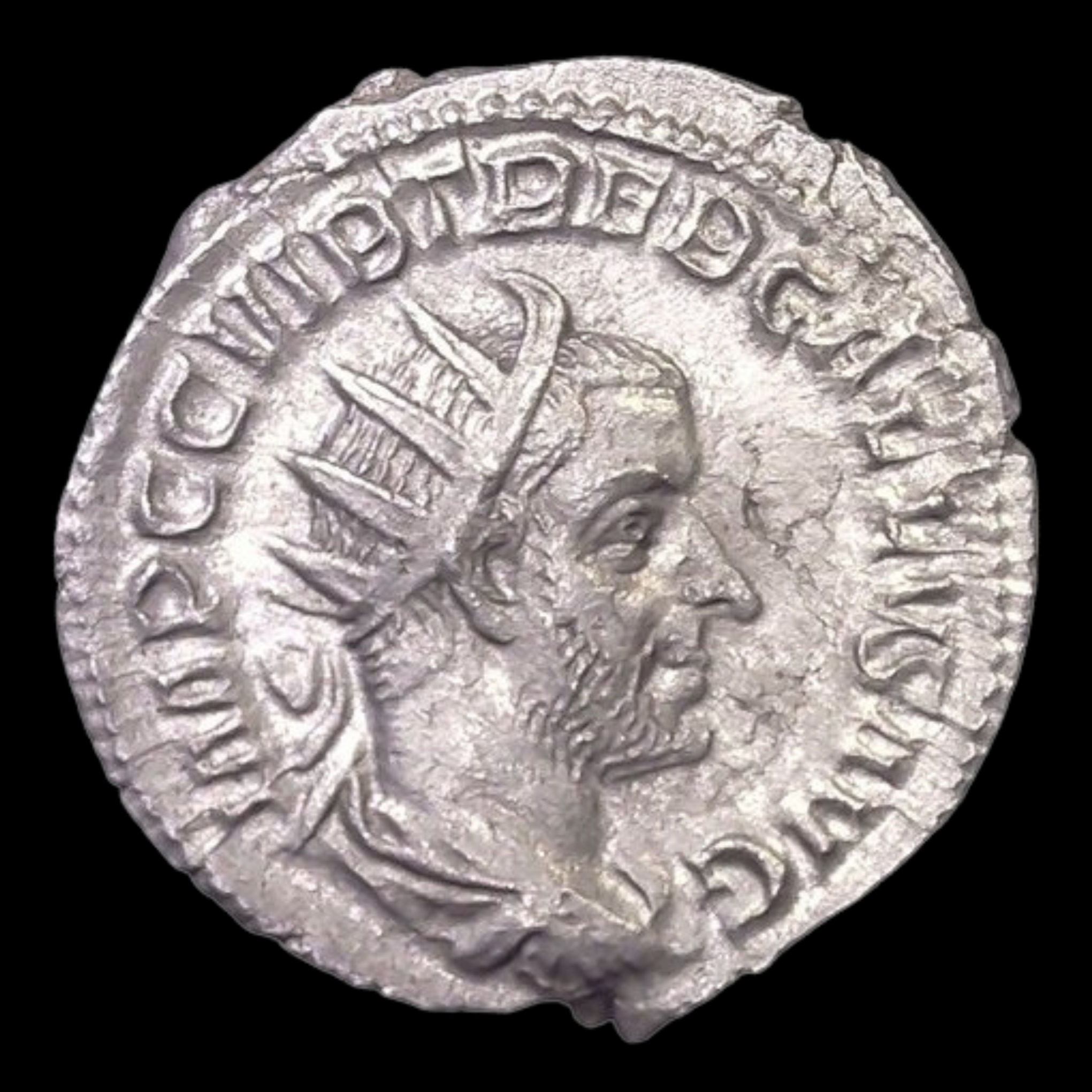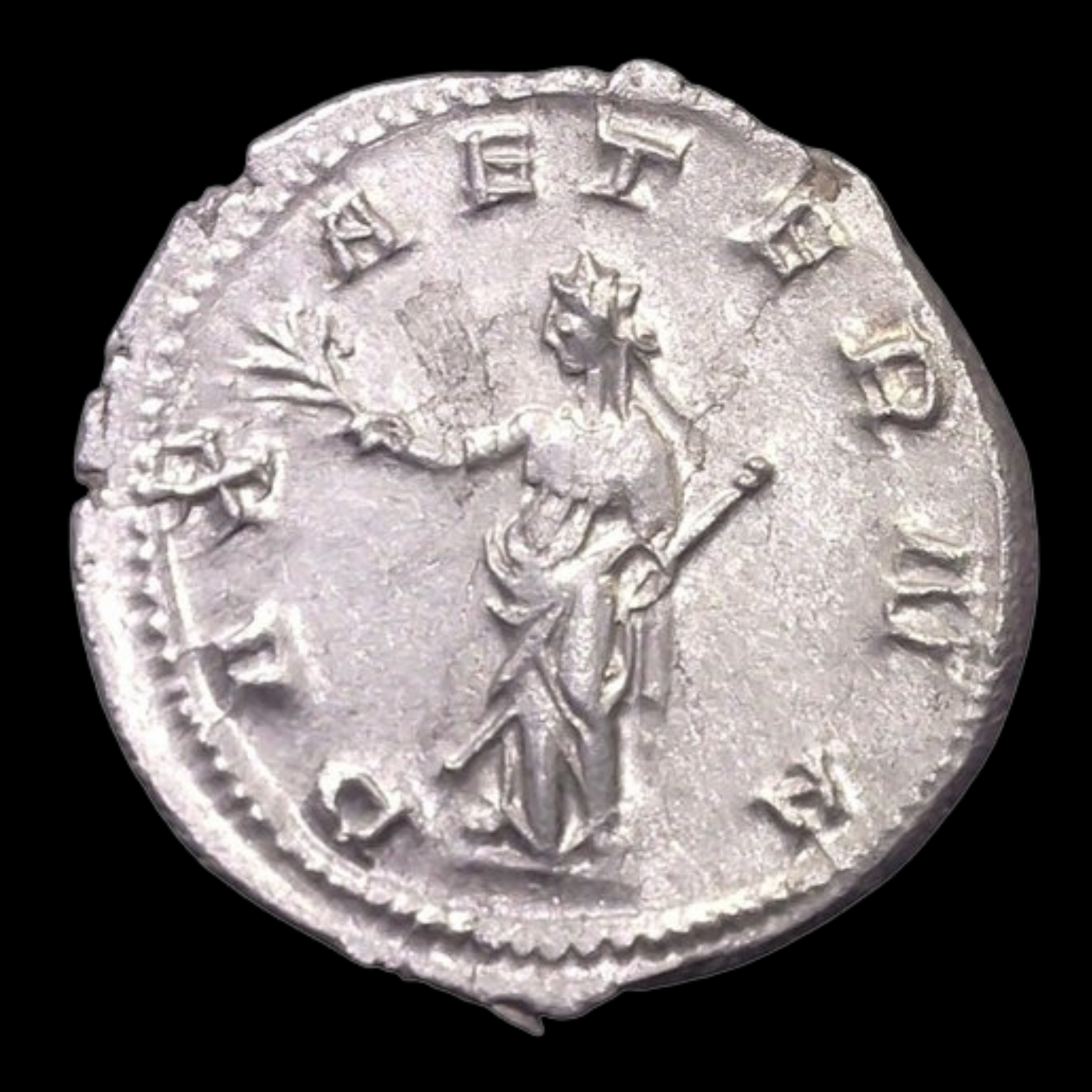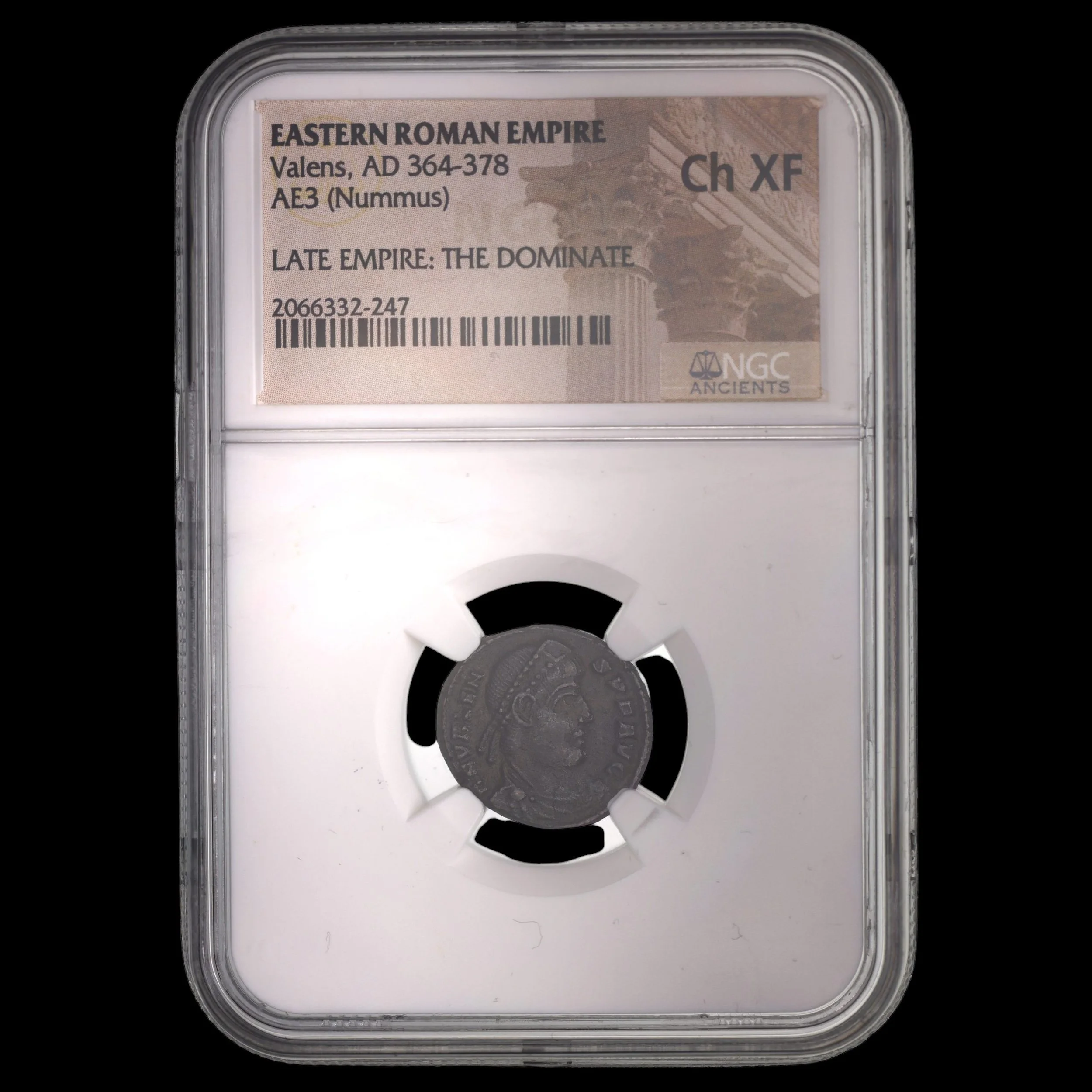 Image 1 of 2
Image 1 of 2

 Image 2 of 2
Image 2 of 2



Roman Empire Silver Antoninianus of Trebonianus Gallus (about 1770 years ago)
This silver-washed coin was issued during the brief reign of Emperor Trebonianus Gallus at a provincial branch mint during the tumultuous "Crisis of the Third Century." The antoninianus had become the standard silver denomination of the period, though by this time it contained significantly less precious metal than earlier issues.
Coin Description:
Front side: Radiate (wearing spiked crown), draped, and cuirassed bust of Trebonianus Gallus facing right; Latin inscription "IMP C C VIB TREB GALLVS AVG" (Emperor Caesar Gaius Vibius Trebonianus Gallus Augustus)
Back side: Pax (goddess of peace) standing left, holding olive branch and transverse scepter; inscription "PAX-AETERNA" (Eternal Peace)
Technical Details:
Silver-washed bronze composition, weighing 3.43 grams
Antoninianus denomination (double denarius, despite reduced silver content)
References: RIC-71, Cohen-76
No certification mentioned
Date: 251-253 CE, minted at a provincial branch mint
Historical Significance:
Trebonianus Gallus became emperor after the death of Decius in battle against the Goths, ruling during a period of extreme instability for the Roman Empire. The "Eternal Peace" message on this coin likely refers to a controversial peace treaty with the Goths that included annual tribute payments, but which temporarily secured the Danube frontier. The debased silver content of this coin reflects the severe economic challenges facing the empire during this period of military crisis and political instability.
This silver-washed coin was issued during the brief reign of Emperor Trebonianus Gallus at a provincial branch mint during the tumultuous "Crisis of the Third Century." The antoninianus had become the standard silver denomination of the period, though by this time it contained significantly less precious metal than earlier issues.
Coin Description:
Front side: Radiate (wearing spiked crown), draped, and cuirassed bust of Trebonianus Gallus facing right; Latin inscription "IMP C C VIB TREB GALLVS AVG" (Emperor Caesar Gaius Vibius Trebonianus Gallus Augustus)
Back side: Pax (goddess of peace) standing left, holding olive branch and transverse scepter; inscription "PAX-AETERNA" (Eternal Peace)
Technical Details:
Silver-washed bronze composition, weighing 3.43 grams
Antoninianus denomination (double denarius, despite reduced silver content)
References: RIC-71, Cohen-76
No certification mentioned
Date: 251-253 CE, minted at a provincial branch mint
Historical Significance:
Trebonianus Gallus became emperor after the death of Decius in battle against the Goths, ruling during a period of extreme instability for the Roman Empire. The "Eternal Peace" message on this coin likely refers to a controversial peace treaty with the Goths that included annual tribute payments, but which temporarily secured the Danube frontier. The debased silver content of this coin reflects the severe economic challenges facing the empire during this period of military crisis and political instability.







































